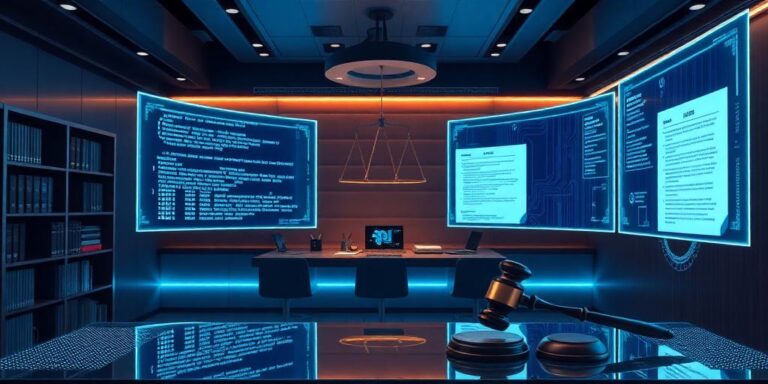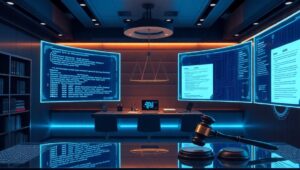Intellectual Property in an AI-Assisted Development World (2027)
Artificial intelligence (AI) is rapidly transforming the landscape of software and technological development. By 2027, AI-assisted development will likely be the norm, raising critical questions about intellectual property (IP) ownership, authorship, and the protection of AI-generated creations. This article explores the key considerations surrounding IP in this evolving environment.
The Blurring Lines of Authorship
One of the most significant challenges in an AI-assisted development world is determining authorship. When AI algorithms contribute substantially to the creation of software, code, or designs, the traditional notion of a human author becomes blurred. Consider these scenarios:
- AI as a Tool: AI assists a human developer by suggesting code snippets or automating repetitive tasks. In this case, the human developer is likely the primary author, with the AI acting as a tool.
- AI as a Co-Creator: AI generates significant portions of the code or design with minimal human intervention. Determining authorship becomes more complex, potentially requiring consideration of both the human developer who initiated the AI process and the AI algorithm itself.
- AI as an Autonomous Creator: AI autonomously generates novel and non-obvious creations without significant human input. This raises fundamental questions about whether AI can be considered an author and, if not, who owns the IP.
Current Legal Frameworks and AI-Generated Works
Existing IP laws, such as copyright and patent laws, were primarily designed with human creators in mind. Applying these laws to AI-generated works presents several challenges:
- Copyright: Copyright law typically protects original works of authorship fixed in a tangible medium. To obtain copyright protection, a work must be created by a human author. This raises questions about whether AI-generated works can be copyrighted and, if so, who owns the copyright. Some jurisdictions are exploring the concept of granting copyright to the owner or programmer of the AI system.
- Patents: Patent law protects new, useful, and non-obvious inventions. While AI can be used to invent new technologies, the requirement of human inventorship poses a hurdle. Some argue that the human who trained or programmed the AI should be considered the inventor, while others suggest that the AI itself should be recognized. Recent court decisions have generally held that AI cannot be listed as an inventor on a patent application.
Key Considerations for IP Protection in 2027
As AI-assisted development becomes more prevalent, it is crucial to consider the following strategies for protecting IP:
- Clear Contractual Agreements: Establish clear agreements between developers, AI providers, and employers regarding the ownership of IP rights in AI-generated works. These agreements should specify the roles and responsibilities of each party and outline the allocation of IP rights.
- Hybrid Approach to IP Protection: Consider a hybrid approach that combines traditional IP protection with new forms of protection specifically designed for AI-generated works. This could involve protecting the AI algorithms themselves as trade secrets or developing new legal frameworks that recognize the unique contributions of AI in the creative process.
- Documenting the Development Process: Maintain detailed records of the AI-assisted development process, including the inputs, outputs, and the extent of human involvement. This documentation can be crucial in establishing ownership and defending IP rights.
- Focus on Human-AI Collaboration: Emphasize the collaborative nature of AI-assisted development, highlighting the unique contributions of both humans and AI. This can help strengthen the argument for human authorship and inventorship.
The Future of IP in an AI-Driven World
In 2027, the legal and ethical landscape surrounding IP in AI-assisted development will continue to evolve. Policymakers, legal scholars, and industry stakeholders must collaborate to develop clear and comprehensive frameworks that address the challenges and opportunities presented by AI. This includes:
- Updating IP Laws: Modernizing copyright and patent laws to accommodate AI-generated works and clarify the requirements for authorship and inventorship.
- Establishing Ethical Guidelines: Developing ethical guidelines for the use of AI in creative and inventive processes to ensure fairness, transparency, and accountability.
- Promoting Innovation: Fostering an environment that encourages innovation in AI-assisted development while protecting the rights of creators and inventors.
Conclusion
The rise of AI-assisted development in 2027 presents both challenges and opportunities for intellectual property. By understanding the complexities of AI authorship, adapting existing legal frameworks, and proactively implementing IP protection strategies, developers, businesses, and policymakers can navigate this evolving landscape and unlock the full potential of AI while safeguarding the rights of creators and inventors.




